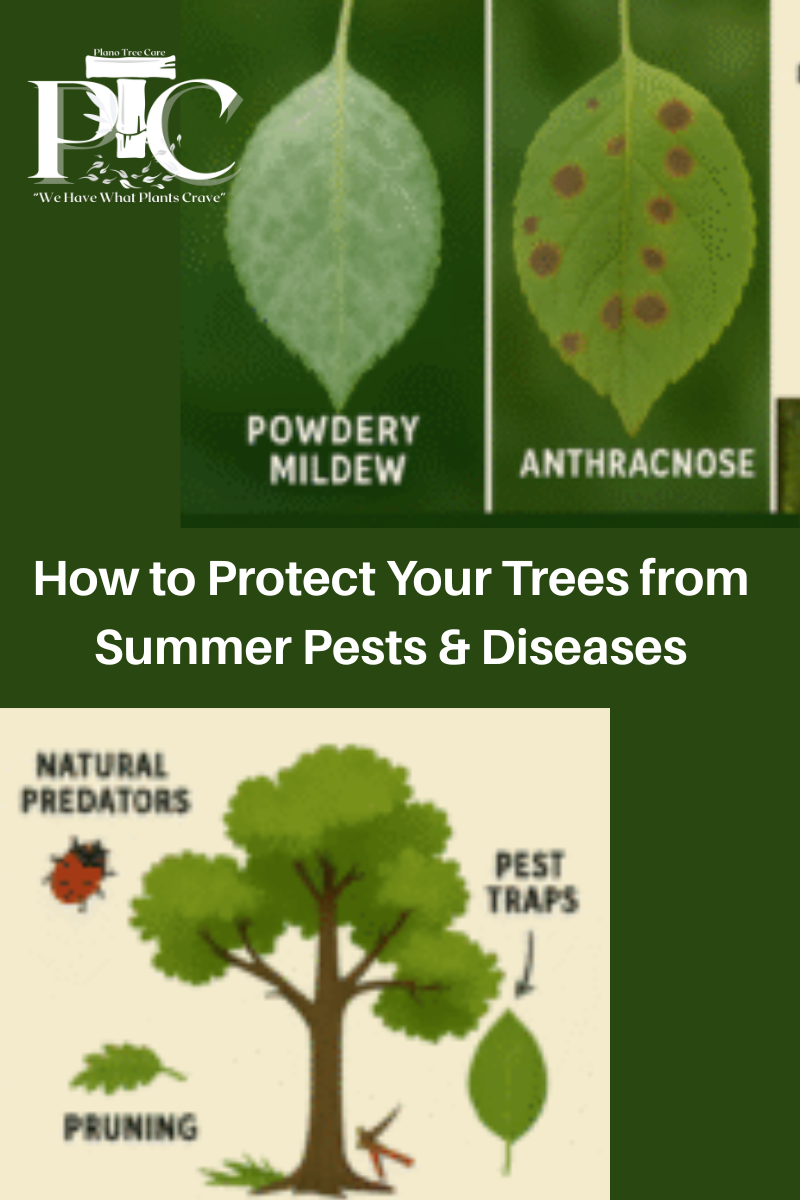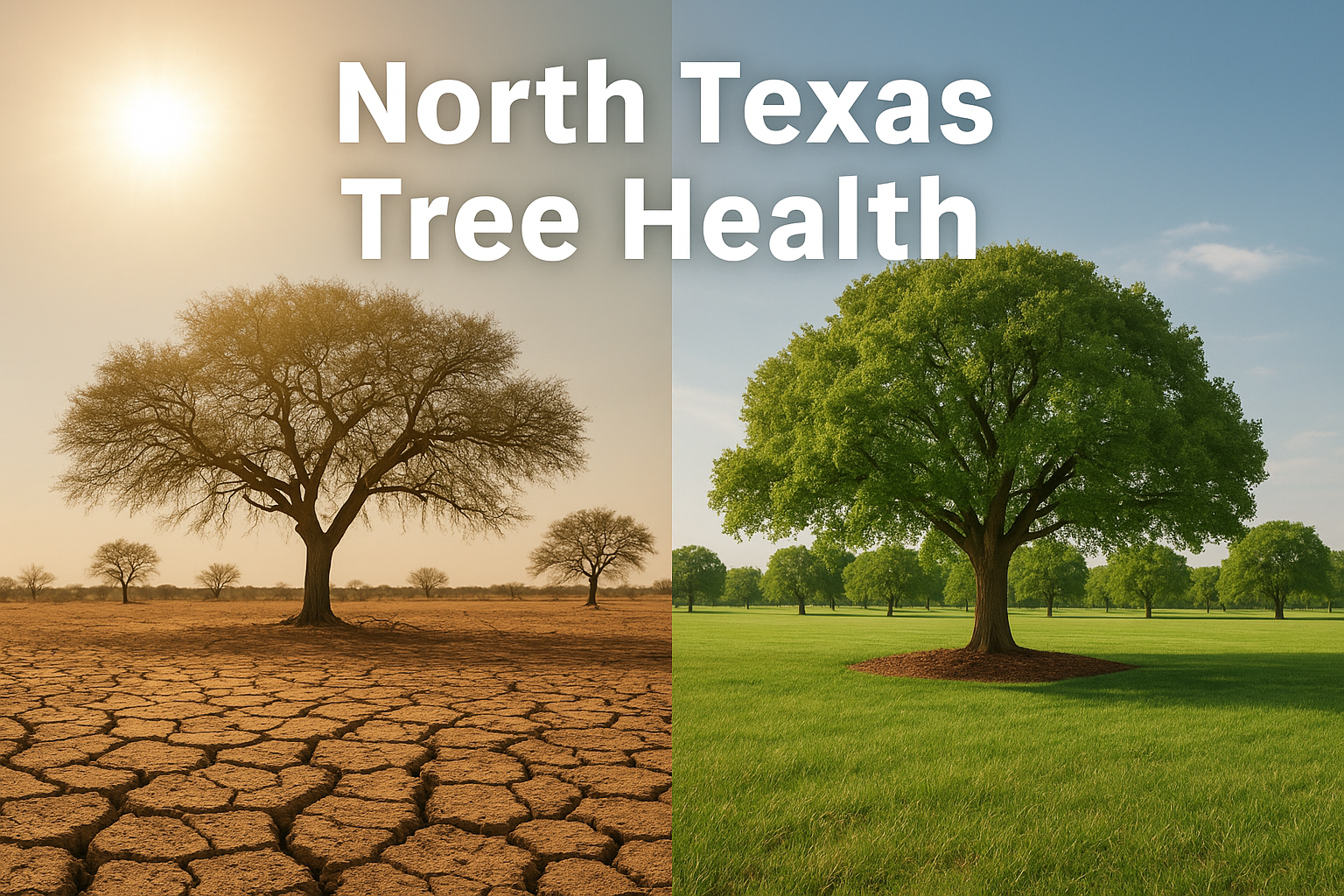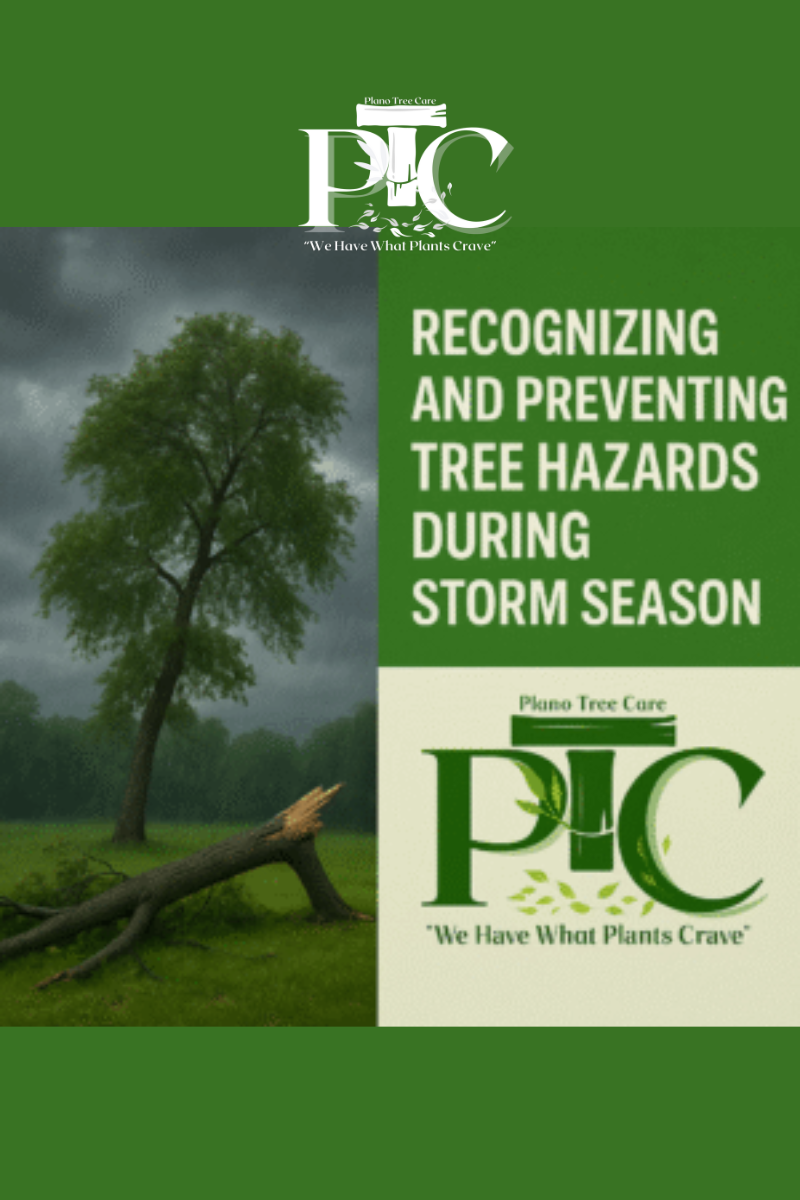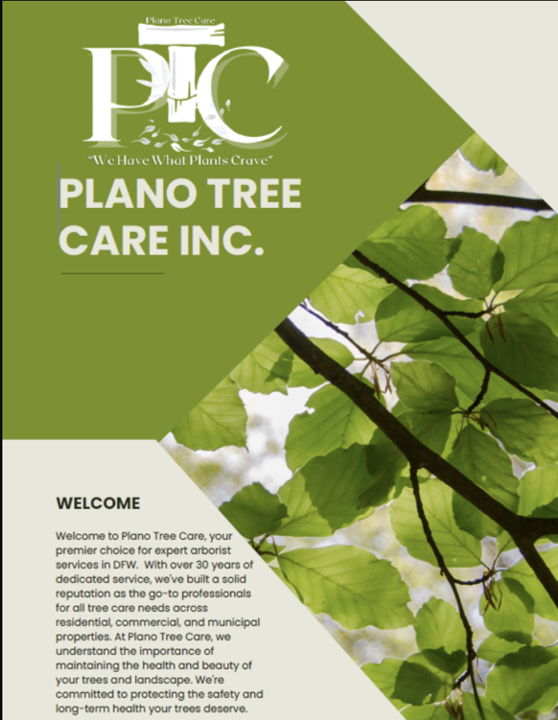Look for in June: How to Protect Your Trees from Summer Pests & Diseases
Summer is a critical time for tree health. As temperatures rise, so does pest activity — and with it, the risk of diseases that can damage or kill your trees. Homeowners and property managers must stay alert, as early signs of infestation can be subtle but fast-moving.
This guide will help you spot warning signs and protect your trees. It offers best practices, organic methods, and professional help when needed. Don’t let summer pests catch you off guard.
Why Summer Is Critical for Tree Health
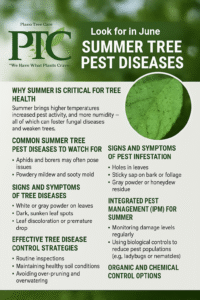
Warmer temperatures and increased humidity create the perfect storm for tree pests and fungal diseases. Common threats like aphids, borers, and powdery mildew grow well in summer. This is especially true when drought or pruning wounds stress trees.
Early detection is vital. Performing regular inspections can help prevent problems from escalating. Make sure your trees are getting:
- Proper hydration (especially during dry weeks)
- Routine inspections for leaf and bark changes
- Preventive care like mulching and tree trimming
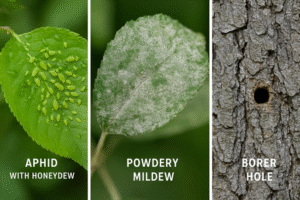
These practices can drastically improve your tree’s resilience through the hottest months of the year.
Common Summer Tree Pest Diseases to Watch For
Summer is prime time for several aggressive pests and fungal infections. If left untreated, these can lead to stunted growth, canopy loss, or structural failure.
Here are the most common threats in North Texas:
- Aphids – Leave behind sticky residue and curled leaves
- Borers – Create holes in trunks and branches, weakening structural integrity
- Powdery Mildew – Appears as white or gray powder on leaves after humid or rainy days
- Anthracnose – Causes dark, sunken leaf spots and premature leaf drop
Learn more about our tree pest control services »
How to Spot Pest Infestations Early
Pest symptoms often mimic general tree stress. But being able to spot telltale signs early gives you a major advantage:
- Leaves with visible chew marks or holes
- Sticky honeydew or sap on foliage
- Twisted or discolored new growth
- Exit holes or sawdust near the base of the trunk (borers)
A weekly visual inspection — especially after rainfall or heatwaves — can help you stay ahead.
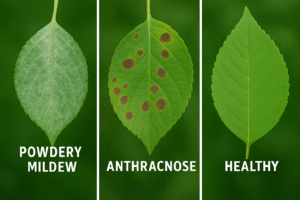
Recognizing Tree Disease Symptoms
Tree diseases often overlap with pest symptoms but include additional red flags:
- White or powdery substances on leaf surfaces
- Dark blotches or sunken lesions on leaves (Anthracnose)
- Bark cracking or oozing sap (Cankers or bacterial infections)
- Sudden leaf drop or limb dieback
If your trees show multiple signs at once, it’s time to consider a professional tree health evaluation.
Effective Tree Disease Control Strategies
Keeping your trees healthy during summer requires consistency:
- Inspect trees at least twice per month
- Water deeply and early in the day to minimize fungal growth
- Mulch around the base to conserve moisture and discourage weed growth
- Prune diseased limbs promptly and sanitize pruning tools
Tree trimming and pruning services »
These small steps add to long-term tree health and better disease resistance.
What Is Integrated Pest Management (IPM)?

Integrated Pest Management (IPM) is a sustainable approach that limits chemical use and focuses on long-term prevention:
- Monitor pest population levels
- Use natural predators (e.g., ladybugs for aphids)
- Adjust watering, pruning, and spacing to reduce pest attraction
IPM works best when it’s started early in the season and adjusted based on each tree’s condition.
Organic vs. Chemical Control Options
When infestations are severe, intervention may be necessary. Start with organic methods when possible:
- Neem oil, insecticidal soap, or horticultural oils for soft-bodied pests
- Bacillus thuringiensis (Bt) for caterpillars
- Copper-based fungicides for powdery mildew
Chemical pesticides can be effective but should be used cautiously and in compliance with local regulations. We always recommend consulting a certified arborist before using any commercial-grade treatments.
Consider Disease-Resistant Trees for Long-Term Health
Planting disease-resistant tree species is a smart, long-term strategy for reducing maintenance and improving resilience:
- Select native trees that naturally thrive in the North Texas climate
- Choose cultivars bred for disease resistance
- Diversify your landscape to reduce the spread among trees
Our tree planting services include recommendations for species best suited to the Plano area.
Summer Tree Care Tips for a Healthier Landscape
Give your trees the support they need with these proactive care strategies:
- Prune to increase airflow and remove dead or infected branches
- Water deeply once or twice a week (depending on rainfall)
- Add mulch 2–3 inches thick, keeping it away from the trunk
- Watch for stress signs after storms or heat waves
Need help cleaning up storm-damaged limbs? We offer 24/7 emergency storm damage tree service. »
When to Call a Professional Arborist
Sometimes, tree issues go beyond basic care. A certified arborist can diagnose complex diseases and prescribe targeted treatments.
Call in a pro if you notice:
- Sudden dieback of limbs or canopy
- No improvement after DIY treatments
- Structural issues like leaning trunks or splitting limbs
- Multiple pest or disease symptoms across different trees
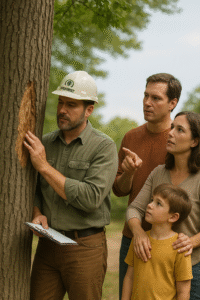
Contact Plano Tree Care Inc. today to schedule a professional tree health assessment.
Final Thoughts: Stay Proactive This Summer
Tree care doesn’t take a summer break. In fact, the hottest months are when your trees are most vulnerable — and when they need the most attention.
With regular monitoring, preventative care, and prompt treatment, you can keep your landscape thriving all summer long. For expert support and reliable service, trust Plano Tree Care Inc. to help your trees beat the heat.

